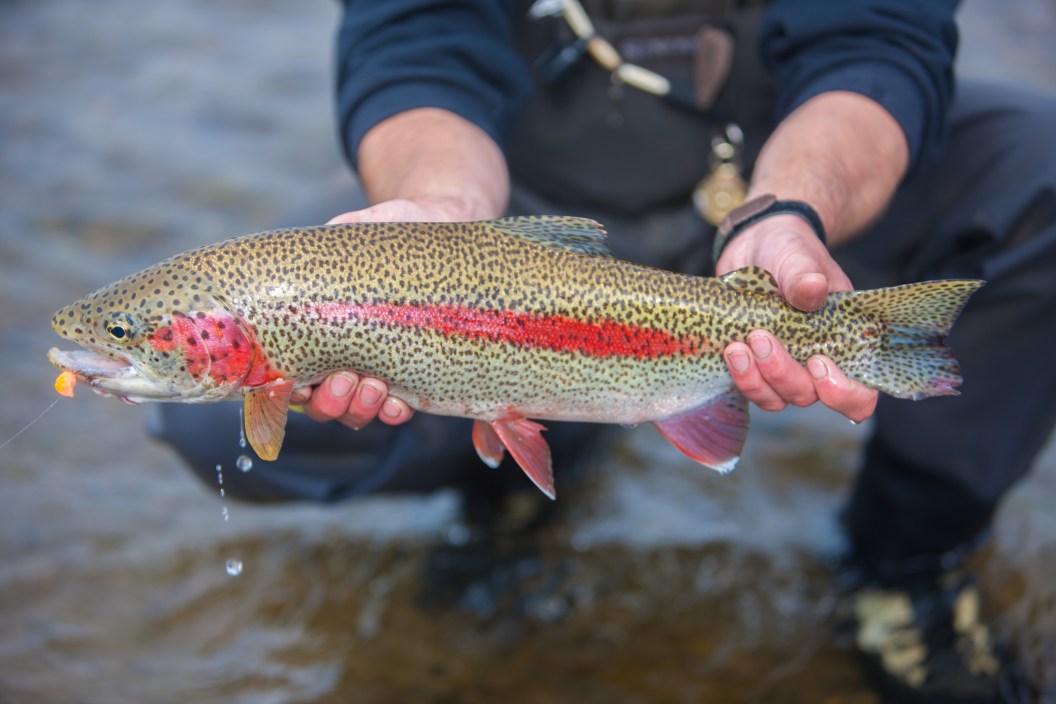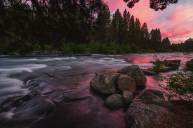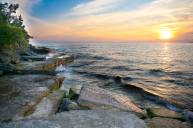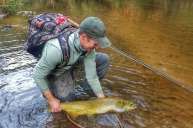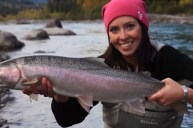Alaska is famous for its summer salmon runs—so much so that rivers are packed with fishermen and grizzly bears alike, fishing for red salmon and the ever-elusive king salmon. And while summer salmon fishing in Alaska should definitely be on your bucket list, as someone who's lived in Alaska for more than a decade, fall fishing in Alaska is one of my favorite adventures. The fish are still plentiful; the fall foliage (if you hit it just right) is gorgeous; and, without the summer crowds, you'll also get a lot of these prime Alaska fishing spots to yourself.
By September, the salmon runs on some of Alaska's big rivers like the Russian, Kenai, and Copper are drying up. But it's a huge state, with plenty of other species and regions to target. After a few long nights of scheming up some fall trips for myself and my die-hard fishermen friends, I've put together a list of the best places to go fishing in Alaska this season, including silver and steelhead fishing on the Kenai Peninsula, halibut and rockfish fishing in Homer, lake fishing in the Matanuska-Susitna Valley, and rainbow trout fishing in the Bristol Bay drainage.
Keep in mind that winter in Alaska comes a lot quicker than down in the Lower 48, so plan your trip for early fall. Pack your warm clothes and your favorite fishing rods—and get to fishing.
Kenai Peninsula: Silvers and Steelheads
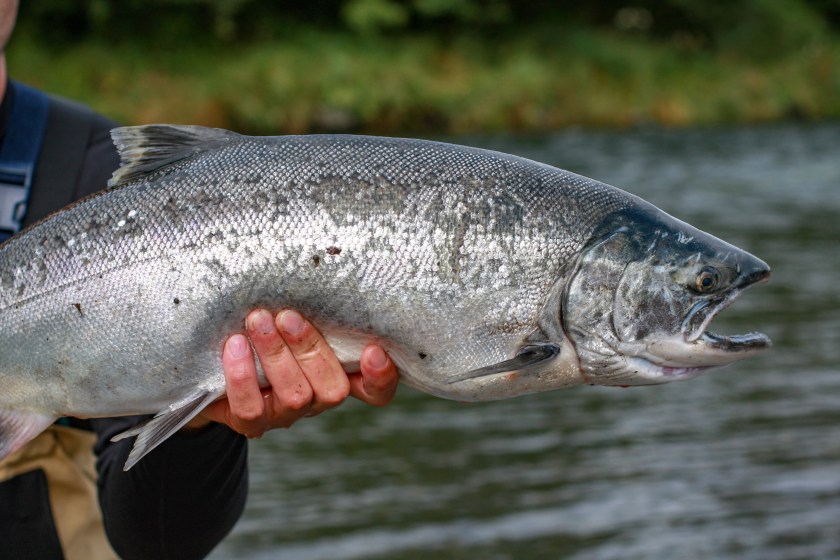
Getty Images, christiannafzger
If river fishing is your style, head to the numerous rivers on the Kenai Peninsula for a fall Alaska fishing trip. This is one of my favorite places to fish in the world, and this summer I had the privilege of living in Cooper Landing, right smack in the middle of the peninsula. Even though the majority of the Kenai salmon runs have mostly dried up by fall, you can still catch silvers and steelheads. Silver salmon run the rivers much later than other species, and the late run begins in late September and runs to mid-October.
Steelhead are a type of trout that, like salmon, are anadromous: they're born in freshwater before migrating to the ocean to feed and mature. Like salmon, they then return to freshwater to spawn. Elusive, aggressive, and bigger than your regular rainbow trout, steelheads are a highly sought-after game fish. They typically start entering the Kenai Peninsula's rivers at the beginning of September and run into November.
There are plenty of rivers on the Kenai to target steelhead. The Kasilof River, also known for its spring king salmon runs, has a decent steelhead fishery and is very easy to access. Deep Creek, farther south, is one of the more well-known steelhead fisheries on the peninsula and also has silver runs at the same time. Even farther south is Anchor River, one of the most popular steelhead streams, where you can also catch silver salmon and Dolly Varden this time of year.
Homer: Halibut, Rockfish, and More
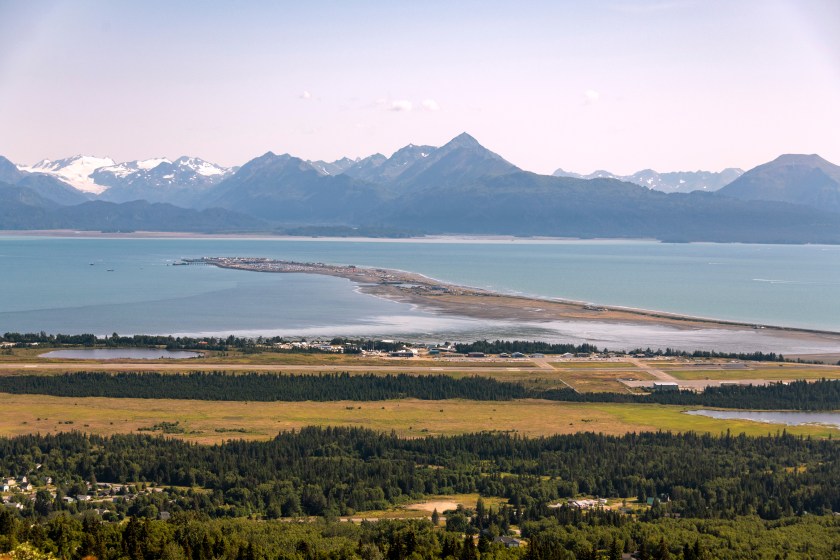
Getty Images, Lance King
Homer is a little town with a big title: the Halibut Fishing Capital of the World.
And it certainly has earned it. The Homer Spit, a narrow finger of land jutting into Kachemak Bay, is packed with boat harbors and fish processors. Halibut weighing over 100 pounds are a common catch from both the bay and the nearby Gulf of Alaska. Halibut are known to be fast and aggressive, with a distinctive (and amazingly fun) head shake when they are hooked. Some of the larger specimens can even reach over 300 pounds.
If you're looking for more than just halibut, rockfish stay active well into October and are a fun and tasty fish to catch. You may also be able to hook some ocean-run king salmon if you book a boat that's set up for trolling. "Feeder" king salmon are a young, tasty variety that come into Kachemak Bay to feed before heading back into the deep waters to grow.
Once you're done fishing, be sure to check out one of my favorite bars in Alaska, The Salty Dawg Saloon. It originally was one of the first cabins in Homer, built in 1897, and has spent time as a post office, railroad station, grocery store, and school house. Now it's a funky little hole in the wall, known for the dollar bills plastered on every available space inside, and its lethal margaritas.
Mat-Su Valley: Grayling, Arctic Char, Trout and More
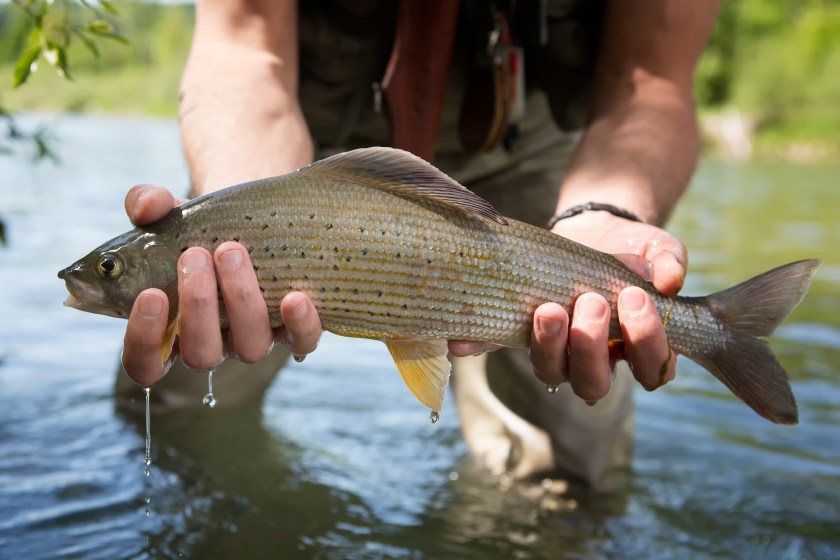
Getty Images, Dieter Meyrl
The Matanuska-Susitna Valley, about an hour north of Anchorage, is home to over 90 lakes, many of which are stocked by the Alaska Department of Fish and Game. With temperatures beginning to drop off in the fall, the valley's lakes provide excellent fishing as the fish become more active and start feeding in shallower water.
The opportunities are endless, and so are the fish species. Depending on the lake, you can hook stocked arctic char, chinook salmon, rainbow trout, and arctic grayling. Blackfish and northern pike can also be found. Check out the Fish and Game brochure for a full list of lakes and fish species.
If you're more interested in river fishing, the Susitna River—flowing south from the Alaska Range through the Mat-Su Valley—is one of south-central Alaska's biggest fish producers. There's great fishing in clearwater tributary streams such as the Deshka, Little Susitna, and Talkeetna-area rivers, which boast some incredible trout and grayling.
The Mat-Su Valley is on the road system in Alaska and is easily accessible from Anchorage. There are also plenty of towns to stay in, including Talkeetna, Palmer, and Wasilla, making it great for a visit. Check out the numerous breweries in small-town Palmer and, if you're lucky enough to get a moose tag, combine your fishing trip with a Mat-Su Alaskan moose hunt.
Bristol Bay Drainage: Rainbow Trout
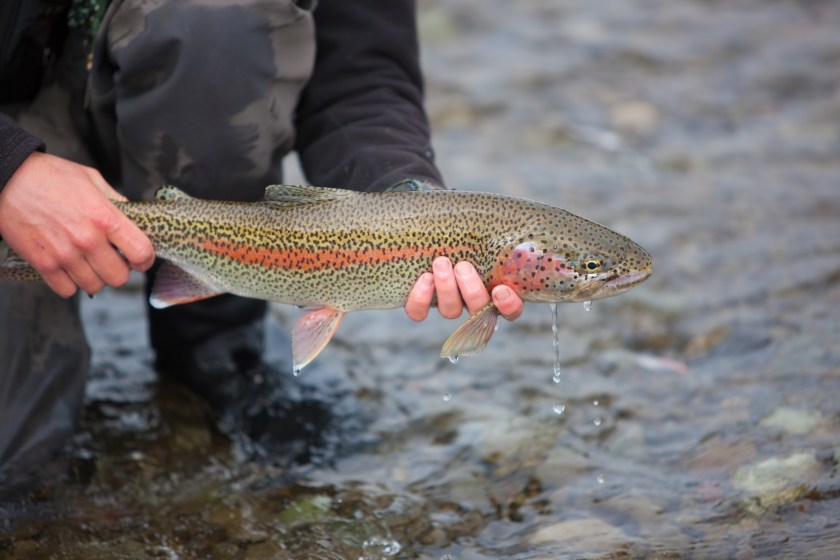
Alaska is known for its massive rainbow trout, with fish commonly measuring 25 to 30 inches with a girth to match. Alaskan rainbows also have dark colors and leopard spots, making them a beautiful fish to catch.
Bristol Bay in western Alaska is home to the world's largest red salmon fishery in the world. While the red season will be over in the fall, the Bristol Bay rivers offer some of the best rainbow trout (and char!) fishing in Alaska.
There are plenty of rivers to choose from. The Kvichak, running deep and clear, is known for some of the world's largest wild rainbow trout. The Alagnak River and the Iliamna River are also famous for their rainbows. Pack your flesh flies and beads; the rainbow trout in Alaska get so fat because they're munching salmon eggs and salmon flesh all summer.
The Bristol Bay drainage, while beautiful, is the most remote area on our list. It's off the road system, and you'll need to catch a flight from Anchorage to King Salmon in order to get there. It's also a massive area of about 40,000 square miles, so make sure you've planned your trip well before just showing up in King Salmon. If you don't have experience in remote Alaska, we recommend using a guiding outfitter or staying at one of the many fishing lodges in the area.
READ MORE: 7 Most Beautiful Fly Fishing Destinations In the World
